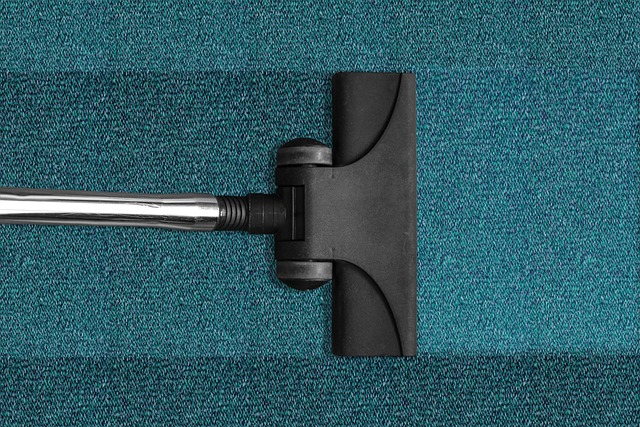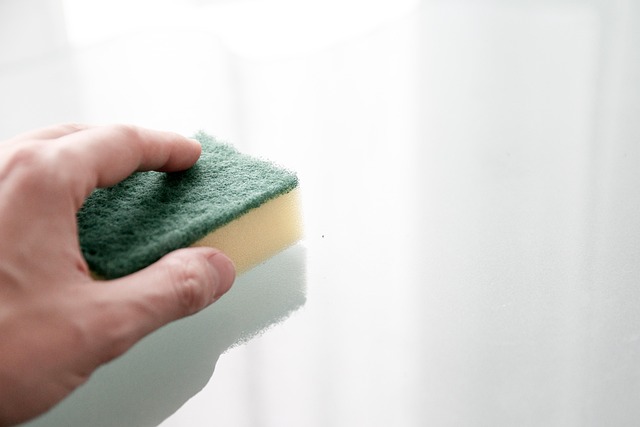Carpets in high-traffic areas like hallways and entryways require specialized cleaning due to constant dirt exposure and footfall. Regular vacuuming isn't enough; deep cleansing methods such as hot water extraction or steam cleaning are essential to remove stains, dust, allergens, and bacteria, revitalizing fibers and ensuring longevity. High footfall leads to significant wear and tear, visible through dirt buildup and reduced elasticity. Professional deep cleaning services use advanced equipment and eco-friendly solutions, understanding unique challenges based on carpet types. Preparation includes thorough vacuuming and spot cleaning, followed by specialized solutions for optimal results. Post-care involves avoiding immediate walking and using fans to dry, with regular vacuuming and spot cleaning to maintain appearance. Choosing the right method and professional services ensures a clean, healthy environment while prolonging carpet lifespan.
Carpets in high-traffic areas face unique challenges, with regular wear and tear leading to built-up dirt, debris, and stains. This article delves into the intricacies of deep cleaning these heavily used spaces, addressing specific issues like common contaminants, suitable cleaning methods, and advanced techniques for optimal results. We explore pre-cleaning steps, post-care tips, and when to seek professional help, offering a comprehensive guide to maintaining your carpets in high-traffic areas.
Understanding High-Traffic Areas and Their Unique Challenges

In high-traffic areas, carpets face unique challenges that require specialized carpet cleaning techniques to address effectively. These areas, such as hallways, entryways, and common spaces in homes or public buildings, experience heavy footfall daily, leading to increased dirt, grime, and traffic-related damage. Regular vacuuming alone may not be sufficient to restore these carpets to their original condition.
Carpet cleaning for high-traffic areas involves deep cleansing methods like hot water extraction or steam cleaning to penetrate and remove deeply embedded stains, dust, allergens, and bacteria. These techniques help in revitalizing the carpet’s fibers, ensuring they can withstand continued heavy use while maintaining a clean and healthy environment.
The Impact of Regular Wear and Tear on Carpets

Regular wear and tear significantly impact carpets in high-traffic areas, leading to a buildup of dirt, stains, and dust. The constant footfall compacts the fibers, causing them to lose their elasticity and luster over time. High-use zones, such as entryways, hallways, and playrooms, are particularly susceptible to deep soil ingrainment, which can make carpets appear worn out and unappealing. Without proper and regular carpet cleaning for high-traffic areas, these issues not only affect the aesthetic appeal but also pose health risks by harboring allergens and bacteria.
The accumulation of debris and grime in heavy-use carpets can result in reduced air quality within a space due to the release of volatile organic compounds (VOCs). Regular deep cleaning helps remove these pollutants, ensuring a healthier living or working environment. Proper carpet maintenance for high-traffic areas is key not only to preserving their visual appeal but also to prolonging their lifespan and maintaining optimal indoor air quality.
Common Dirt and Debris Found in Heavy Use Zones

In high-traffic areas, carpets are often exposed to a variety of dirt and debris. Common contaminants include food particles, pet hair and dander, dust mites, and even small toys or shoes. These substances can quickly build up in heavily used zones, leading to a noticeable decrease in carpet quality over time. Regular carpet cleaning for high-traffic areas is essential to maintain the appearance and longevity of these valuable floors.
Professional deep cleaning services employ specialized equipment and techniques to thoroughly remove this accumulated grime. Vacuuming alone might not be sufficient, as many debris particles are too small or deeply embedded in the fibers. Thus, efficient carpet cleaning for heavy use zones involves powerful suction, advanced filtration systems, and sometimes, targeted applications of safe, eco-friendly cleaning solutions tailored to specific types of stains and soil buildup.
Choosing the Right Carpet Cleaning Methods for High Traffic

When it comes to carpet deep cleaning in high-traffic areas, understanding the specific needs and challenges of these spaces is crucial. Different carpet types require tailored cleaning approaches, especially in heavily used sections that often bear the brunt of daily footfall. For instance, wool carpets might need a gentle approach to prevent fiber damage, while synthetic fibers can withstand more aggressive cleaning techniques.
The choice between steam cleaning and dry cleaning depends on various factors. High-traffic areas may benefit from frequent steam cleaning for its deep-penetrating capabilities, which effectively remove deeply ingrained dirt and allergens. However, in settings with delicate carpets or those requiring faster drying times, dry cleaning might be a better option. This method is gentler and suitable for area rugs or carpets that cannot withstand prolonged moisture exposure.
Effective Pre-Cleaning Steps to Prepare Your Carpets

Before diving into a deep cleaning process, preparing your carpets through effective pre-cleaning steps is essential, especially in high-traffic areas. Begin by vacuuming thoroughly to remove surface debris, dirt, and loose fibers. This initial step helps prevent damage caused by excessive agitation during the main cleaning process. Next, address any heavily soiled spots using a spot cleaner or carpet shampoo. Applying the right product directly on stains, followed by gentle scrubbing with a clean brush or sponge, can significantly enhance the cleaning outcome.
Additionally, consider pre-treating stubborn marks with specialized solutions designed for carpet cleaning in high-traffic zones. This preparation not only saves time but also ensures that your carpets receive the deep clean they need, revitalizing their appearance and extending their lifespan.
Advanced Deep Cleaning Techniques for Optimal Results

In heavy-use areas, such as entryways and high-traffic corridors, regular vacuuming is not enough to maintain a clean carpet. Here, advanced deep cleaning techniques become essential for optimal results in Carpet Cleaning for High-Traffic Areas. Professional cleaners employ powerful extraction methods that use high-pressure hot water and specialized detergents to loosen and remove deeply embedded dirt and grime. This process not only revitalizes the carpet’s appearance but also extends its lifespan by preventing fiber damage caused by constant foot traffic.
For added effectiveness, some advanced techniques include steam cleaning, which uses steam vapor to kill bacteria and germs while gently lifting stains, and encapsulation, a method that encases dirt particles in a dry powder, making it easy to vacuum away. These innovative approaches ensure that even the most heavily used carpets can be restored to their original condition, keeping your spaces looking fresh and inviting.
Selecting the Ideal Cleaning Solutions for Different Carpet Fibers

When it comes to deep cleaning carpets in high-traffic areas, choosing the right cleaning solutions is paramount. Different carpet fibers require specialized care to maintain their integrity and ensure effective cleaning. For instance, synthetic fibers like polypropylene or nylon are resistant to dirt and stains but may need detergent solutions that won’t damage their makeup. On the other hand, natural fibers such as wool or silk demand gentler, pH-neutral cleaners to prevent fiber shrinkage or discoloration.
At the heart of successful high-traffic carpet cleaning is understanding the unique needs of each fiber type. This allows for the selection of appropriate cleaning agents that effectively remove dirt and grime without causing harm. Using the correct solutions ensures your carpets not only look their best but also last longer, saving you from frequent replacements and maintaining the overall aesthetics of your space in high-use areas.
Post-Cleaning Care and Maintenance Tips for Longevity

After a deep carpet cleaning, proper post-care is essential to maintain its freshness and prolong its lifespan, especially in high-traffic areas. Here are some tips to ensure your carpets stay in top condition. Firstly, avoid walking on the carpet immediately after cleaning; allow it to dry completely to prevent any potential damage or staining. This might mean temporarily shifting furniture or using fans to expedite the drying process.
Regular vacuuming is another key maintenance step. Use a vacuum cleaner with a HEPA filter to remove dirt and allergens effectively. For heavily soiled areas, spot cleaning with a suitable carpet cleaning solution can help maintain the carpet’s appearance. Remember, consistent care ensures your high-traffic carpets remain vibrant and durable for years to come.
Professional Help vs DIY: When to Outsource Carpet Deep Cleaning

When it comes to deep cleaning carpets in high-traffic areas, deciding between professional help and DIY methods is essential for maintaining a healthy and aesthetically pleasing space. While do-it-yourself carpet cleaning can seem like a cost-effective solution, it may not be as efficient or thorough as professional services. Carpets in heavy use zones often require specialized equipment and solutions to remove deep-seated dirt, stains, and allergens effectively.
Outsourcing carpet deep cleaning is particularly recommended for homes or businesses with high foot traffic, frequent parties, or pets. Professionals have access to advanced tools like powerful vacuums, steam cleaners, and spot removal treatments tailored to different fabric types. They understand how to navigate the challenges of intricate patterns, valuable fabrics, and hard-to-reach corners, ensuring a deeper clean than most DIY approaches can achieve. This is especially crucial in high-traffic areas where regular cleaning may not suffice, preventing damage and maintaining air quality through allergen reduction.
